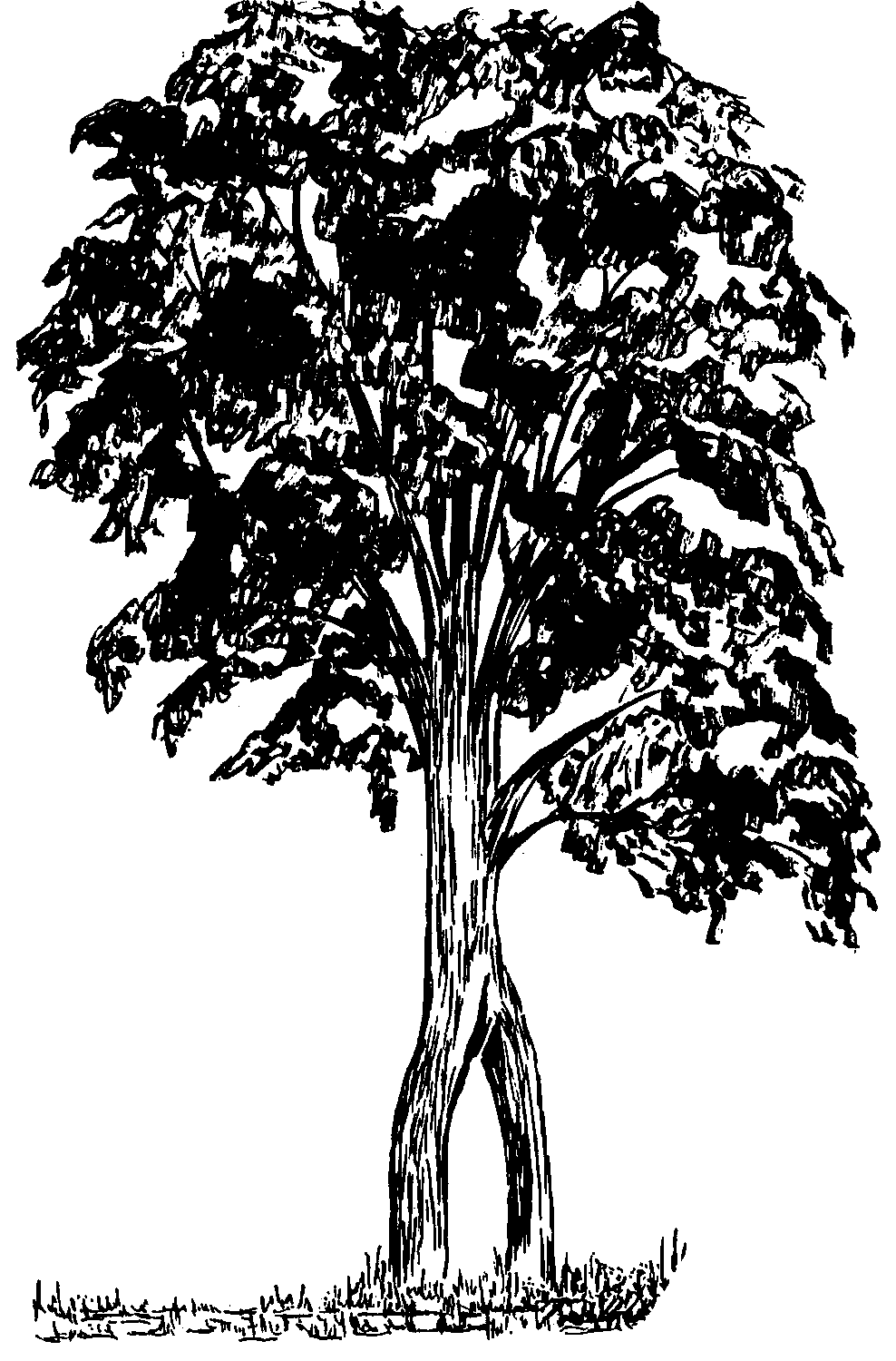Excerpts from "When You and I Were Young, Maggie", by George Rickard, 1981. Reprinted by Glanbrook
Heritage Society, with permission, 2001.
On April 6, 1840, Joseph Bernie Clark, thirty-one, married Elizabeth Bell, age nineteen. By the following
March, expecting their first child and eager to establish themselves, the Clarks purchased ninety-four
acres of land in the fifth concession of Glanford Township, Wentworth County from the Canada Company.
Their first residence is believed to have been a log house situated north of the existing farmhouse. Here
in all likelihood, their first born, Margaret, arrived on July 14, 1841.
Further north along the banks of the Twenty Mile Creek, Joseph Clark also operated a sawmill. With his
success, both as a farmer and a sawyer, and with the demands of a growing family, the Clarks built a
substantial stone farmstead surrounded with stately maples.
In 1859, George Washington Johnson, recently graduated from the University of Toronto, came to teach
at S.S. #5, Glanford. A native of the adjacent community of Binbrook, George, twenty-one, dark and
handsom, soon found himself in love with his student, the fair Maggie Clark who was just eighteen.
She reciprocated his affection and the two shared many hours together. Fond of music they would often
sing together at the Clark homestead or in the local Glee Club of Glanford; and frequently summer strolls
along the maple lined banks of Twenty Mile Creek took them to her father's mill, a short distance north
of the Clark homestead. It was on one these romantic walks that George Johnson was inspired to begin a
volume of verses entitled "Maple Leaves" which would contain the poem "When You and I Were Young, Maggie".
Much in love, the couple became engaged. However, a storm loomed on the horizon. Maggie who had contracted
tuberculosis, then known as the "Great White Plague" made both aware of the threat it held for their
future.
During one of his financee's more serious periods of illness, George made a solitary walk to the hill
which overlooked the mill. Here in the "green grove - where first the daises sprung", George Washington
Johnson composed the verse that would provide lyrics for the song.
Unfortunately, they would not grow old together. Whether the lyrics were a denial of reality, a touching
pretense or an expression of faith in their future, the couple made plans for marriage.
But first there was a period of separation. Maggie went to the Wesleyan College in Hamilton and George
to study at the Fort Edward Institute on the Hudson River in New York State. Distance only increased
their love and on October 21, 1864 they were married at the Methodist Church in Glanford Township.
George had now settled on a career of journalism with the "Courier" in Buffalo, New York. His ability
as a journalist soon became recognized and he was offered a position with the Cleveland, Ohio, "Plain ' Dealer". Once he was secure in his new post, George and his bride took up residence in Cleveland.
Then suddently, the tragedy they had feared struck. Maggie's tubercuolois failed to respond to medical
treatment. She passed away on May 12, 1865, at twenty-three, less than a year after their marriage. She
was laid to rest at the family plot in White Church cemetary near Mount Hope. Overwhelmed by his loss,
George resigned from the "Plain Dealer" and returned to Canada and to teaching.
The following year, George visited an old friend in Detroit, Michigan, J.C. Butterfield, who at his
request, set the words of "When You and I Were Young, Maggie" to music.
For several years following his return to Canada, George was principal of the public school in his
native village of Binbrook. He taught for a short period of time at Stoney Creek and in 1875, was
promoted to principal of Central School in Hamilton. From 1891 to 1906, he taught at Upper Canada
College and was later appointed Professor of Language at the University of Toronto, his alma mater.
Subsequently, he becamse Professor of Latin at Cornell Univeristy and as well, was bestowed with the
degree of Doctor of Philosophy by the John Hopkins University.
With retirment, George travelled widely. In 1917, while wintering in Pasadena, California, George
Johnson died, more than half a century after the loss of Maggie. His body was returned to Canada
for burial in the Hamilton cemetary, close to his home in Binbrook.
Despite the claims that the song originated in the United States or in Scotland, it has been firmly
established that both story and ballad belong to Glanford Township.
In 1963, the Ontario Historic Sites plaque was unveiled before the Clark homestead by Blanche Padgham,
a niece of Maggie's. The Maggie Johnson Women's Institute has succeeded in collecting and
researching documentation that clarifies and preserves this touching story from Canada's past.
The plaque is now on display in the Glanbrook Municipal Centre, 4280 Binbrook Road, Binbrook, ON
Charitable Registration # 0673681-50
© Glanbrook Heritage Society 2009
Back to Main Page

